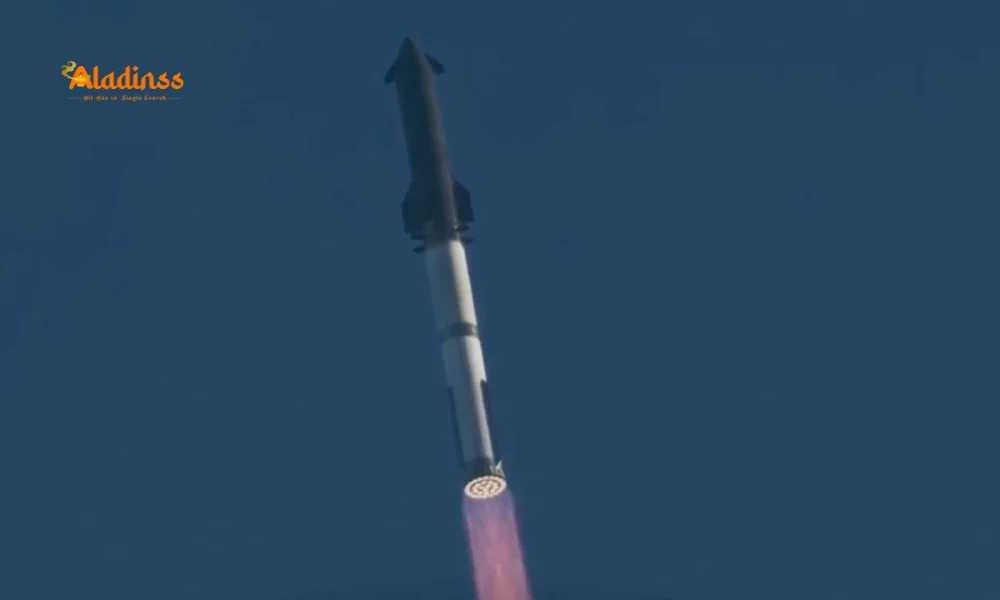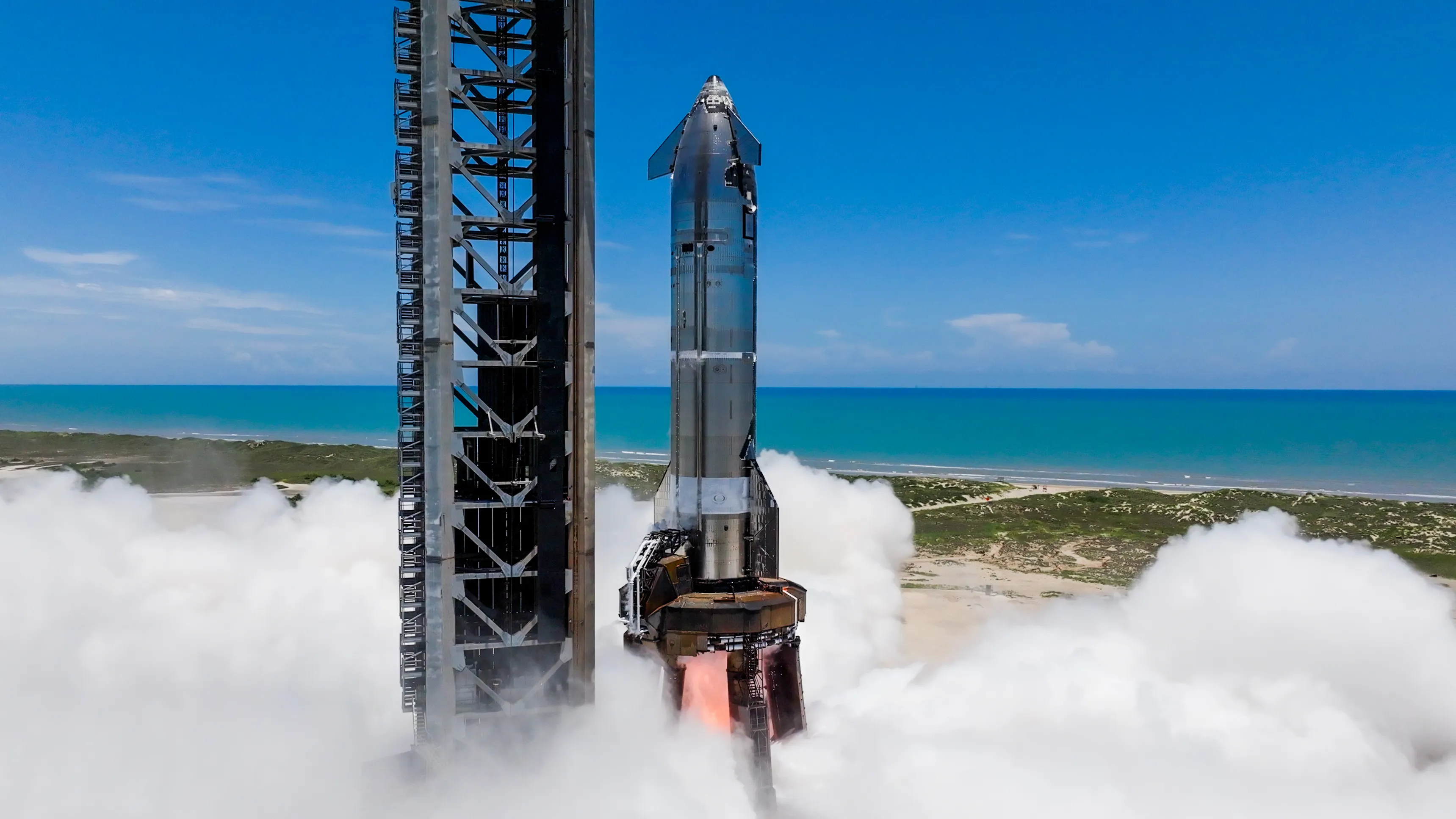Starship 11th Test Flight Success

SpaceX Starship Soars in 11th Test Flight: Successful Splashdown Marks Milestone
In a triumphant leap forward for space exploration, Elon Musk's SpaceX achieved a major breakthrough with the 11th test flight of its colossal Starship megarocket, culminating in a precise splashdown in the Gulf of Mexico. Launched from the company's Starbase facility in southern Texas, the mission saw the 403-foot behemoth traverse nearly halfway around the globe before executing a controlled descent, showcasing enhanced reliability for future lunar and Martian voyages. This Starship test flight not only deployed eight prototype Starlink satellites but also reaffirmed SpaceX's commitment to NASA's Artemis program and Musk's ambitious dream of colonizing Mars.
The liftoff occurred shortly after 6:25 p.m. local time (11:25 p.m. GMT), captivating audiences via live streams as flames erupted from the Super Heavy booster. Amid cheers from the control room, mission commentator Dan Huot exclaimed, "Hey, welcome back to Earth, Starship," capturing the electric atmosphere as the spacecraft skimmed the upper atmosphere before targeting the Indian Ocean for its soft landing-though no recovery was attempted this time. This success comes after a series of setbacks, positioning Starship as a pivotal asset in humanity's next giant leap.
SpaceX's relentless iteration on Starship addresses longstanding criticisms that the technology might falter under NASA's lunar timelines or Musk's interplanetary goals. With reusable components and rapid prototyping at its core, the company continues to push boundaries, making this flight a beacon for reusable rocket innovation.

Mission Breakdown: From Launch to Orbital Deployment
The flight profile was meticulously engineered to validate key systems for deep-space operations. Following separation from the booster, which executed a flawless return to the Gulf of Mexico, the upper stage-Starship itself-achieved orbital velocity, simulating trans-lunar injection trajectories. Engineers monitored reentry stresses on the heat shield tiles, a critical evolution from prior tests where plasma-induced failures led to structural compromises.
A highlight was the successful release of eight mock Starlink satellites, mimicking future constellation expansions to provide global broadband coverage. These dummies, equipped with simulated payloads, orbited briefly before deorbiting, proving the payload bay's deployment mechanisms under microgravity conditions. The booster's grid fin controls and engine relights during descent further demonstrated progress toward full reusability, reducing costs per launch to fractions of traditional expendable rockets.
Ground teams at Starbase and mission control in Hawthorne, California, coordinated in real-time, with telemetry data streaming to refine algorithms for autonomous landings. While the Indian Ocean splashdown avoided hardware recovery to prioritize safety, sensors captured vital aerodynamics data, informing upgrades for catch attempts on future flights using mechanical arms on the launch tower.
Also Read: Bihar Elections 2025: NDA Edge Over Rivals
Strategic Importance: Fueling Artemis and Mars Ambitions
This Starship test flight holds profound implications for NASA's Artemis initiative, where the vehicle is slated as the Human Landing System for Artemis III, targeting a 2027 crewed lunar touchdown. Amid delays flagged by NASA's safety panels-potentially pushing timelines years beyond-SpaceX's iterative successes counter rival narratives from China's accelerating lunar program, aiming for a 2030 taikonaut landing.
Overcoming Historical Hurdles
Starship's journey from concept to orbital contender has been marked by resilience. Earlier flights, including explosive upper-stage disintegrations over the Caribbean and post-apogee failures, yielded invaluable data on Raptor engine throttling and flap deployments. August's prior success, deploying actual dummy Starlinks, set the stage for this refined profile, mitigating risks like propellant slosh during maneuvers.
- Heat shield refurbishment: Musk highlights this as the toughest nut, contrasting the Space Shuttle's nine-month overhauls with Starship's goal of hours-long turnarounds.
- Orbital refueling: Demonstrating cryogenic propellant transfers in space remains pivotal for Mars transit, requiring multiple tanker flights.
- Payload versatility: From Starlink clusters to lunar habitats, adaptability ensures commercial viability alongside government contracts.
For Musk's Mars vision, Starship's 100+ ton payload capacity to low Earth orbit enables cargo precursors for a self-sustaining colony, with uncrewed missions eyed for 2026. This flight's data bolsters investor confidence, potentially accelerating funding for Boca Chica expansions.
Global Space Race Dynamics
As the U.S.-China space rivalry intensifies, Starship's prowess could secure American primacy in cislunar economies, from helium-3 mining to orbital manufacturing. NASA's $2.9 billion Artemis contract underscores this, with SpaceX outpacing Blue Origin's New Glenn delays.
Evolution of Starship: From Explosions to Precision Landings
Starship's development saga is a testament to fail-fast philosophies. The inaugural integrated flight in April 2023 ended in a rapid unscheduled disassembly, but subsequent iterations incorporated stainless-steel reinforcements and methane-oxygen optimizations. Flight 5 in October 2024 achieved booster catch simulations, paving the way for this 11th outing's booster-first splashdown.
Engineers have iterated over 30 Raptor variants, enhancing thrust-to-weight ratios for Mars ascent stages. Avionics upgrades now enable real-time anomaly corrections, as seen in this mission's nominal reentry profile-tiles withstanding 2,500°F peaks without delamination.
Community reactions poured in on social platforms, with Musk tweeting, "Starship is the key to making life multiplanetary," garnering millions of engagements. Analysts project 100 flights annually by 2030, slashing costs to $10 million per launch.
Looking Ahead: Refueling Demos and Lunar Prep
Upcoming milestones include in-orbit refueling demos, essential for Artemis III's 10-day lunar stay. SpaceX plans tanker variants docking autonomously, transferring liquid oxygen and methane without boil-off losses-a feat demanding cryogenic expertise.
Regulatory hurdles from the FAA persist, with environmental assessments for Starbase expansions ongoing. Yet, international partnerships, like ESA's payload slots, broaden Starship's horizon beyond U.S. missions.
For Mars, Musk envisions 1,000-ship fleets by 2033, establishing outposts with ISRU propellant production from atmospheric CO2. This test flight's validation accelerates that timeline, inspiring a new era where space travel rivals airliners in accessibility.
Broader impacts ripple through industries: Starlink's expansion promises connectivity for remote regions, while Starship's heavy-lift enables megastructures like solar power satellites. As SpaceX iterates toward certification, the cosmos feels tantalizingly closer.
Critics once doubted Starship's scalability, but this splashdown silences many, affirming reusable architecture's viability. With Artemis clocks ticking and Mars beckoning, SpaceX's 11th flight isn't just a test-it's a promise fulfilled.
Engineers now pore over gigabytes of telemetry, tweaking for Flight 12's booster catch. Community watch parties at Starbase grow, turning launches into cultural events. Musk's vision, once sci-fi, edges toward reality, one fiery ascent at a time.
In the annals of aerospace, this mission joins Falcon 9's reusability triumphs, but Starship's scale-9.5 million pounds of thrust-heralds unprecedented possibilities. From lunar gateways to Martian domes, the stars align for humanity's expansion.
Comment / Reply From
No comments yet. Be the first to comment!











